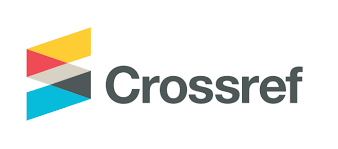Incidência e perfil de suscetibilidade de candidemias de um hospital público em Mato Grosso do Sul, Brasil
Resumo
Introdução: Candidemia é a infecção da corrente sanguínea por leveduras do gênero Candida e está relacionada ao aumento da mortalidade. Objetivo: O objetivo do estudo foi analisar a incidência de Candida spp e seu perfil de suscetibilidade relacionada aos antifúngicos nas hemoculturas positivas dos pacientes internados em um hospital público em Mato Grosso do Sul. Métodos: A metodologia foi transversal, descritiva, realizada através da busca de dados no laboratório de microbiologia da instituição e prontuários de pacientes internados no período de novembro de 2015 a novembro de 2018. Resultados: Os resultados encontrados foram 135 episódios de candidemia, correspondendo a 5,3% dos casos, sendo Candida albicans (isolada em 45 amostras), Candida parapsilosis (33), Candida tropicalis (27) e Candida glabrata (22) as mais frequentes. A maior incidência ocorreu na população idosa (58 casos) e adulta (56) do gênero masculino, internados em UTI ou pronto atendimento médico, com predomínio de C. albicans. Entre as crianças foram identificados 21 casos, sendo 80% destes em menores de 1 ano, e o agente mais frequente, C. parapsilosis. A maioria das espécies de Candida apresentou sensibilidade aos antifúngicos testados, porém alguns isolados apresentaram resistência a algum antifúngico. 100% dos isolados de C. glabrata foram sensíveis aos antifúngicos, e todas as espécies de Candida apresentaram sensibilidade à micafungina. Conclusão: Conclui-se que é importante a identificação das leveduras em nível de espécie e o conhecimento de seus padrões de suscetibilidade para o manejo correto da terapia antifúngica, o que pode contribuir para a redução das taxas de mortalidade atribuídas a essa infecção.
Downloads
Downloads
Publicado
Edição
Seção
Licença
A Revista Brasileira de Pesquisa em Saúde (RBPS) adota a licença CC-BY-NC 4.0, o que significa que os autores mantêm os direitos autorais de seus trabalhos submetidos à revista. Os autores são responsáveis por declarar que sua contribuição é um manuscrito original, que não foi publicado anteriormente e que não está em processo de submissão em outra revista científica simultaneamente. Ao submeter o manuscrito, os autores concedem à RBPS o direito exclusivo de primeira publicação, que passará por revisão por pares.
Os autores têm autorização para firmar contratos adicionais para distribuição não exclusiva da versão publicada pela RBPS (por exemplo, em repositórios institucionais ou como capítulo de livro), desde que seja feito o devido reconhecimento de autoria e de publicação inicial pela RBPS. Além disso, os autores são incentivados a disponibilizar seu trabalho online (por exemplo, em repositórios institucionais ou em suas páginas pessoais) após a publicação inicial na revista, com a devida citação de autoria e da publicação original pela RBPS.
Assim, de acordo com a licença CC-BY-NC 4.0, os leitores têm o direito de:
- Compartilhar — copiar e redistribuir o material em qualquer suporte ou formato;
- Adaptar — remixar, transformar, e criar a partir do material.
O licenciante não pode revogar estes direitos desde que você respeite os termos da licença. De acordo com os termos seguintes:
- Atribuição — Você deve dar o crédito apropriado, prover um link para a licença e indicar se mudanças foram feitas. Você deve fazê-lo em qualquer circunstância razoável, mas de maneira alguma que sugira ao licenciante a apoiar você ou o seu uso.
- Não Comercial — Você não pode usar o material para fins comerciais.
- Sem restrições adicionais — Você não pode aplicar termos jurídicos ou medidas de caráter tecnológico que restrinjam legalmente outros de fazerem algo que a licença permita.





















